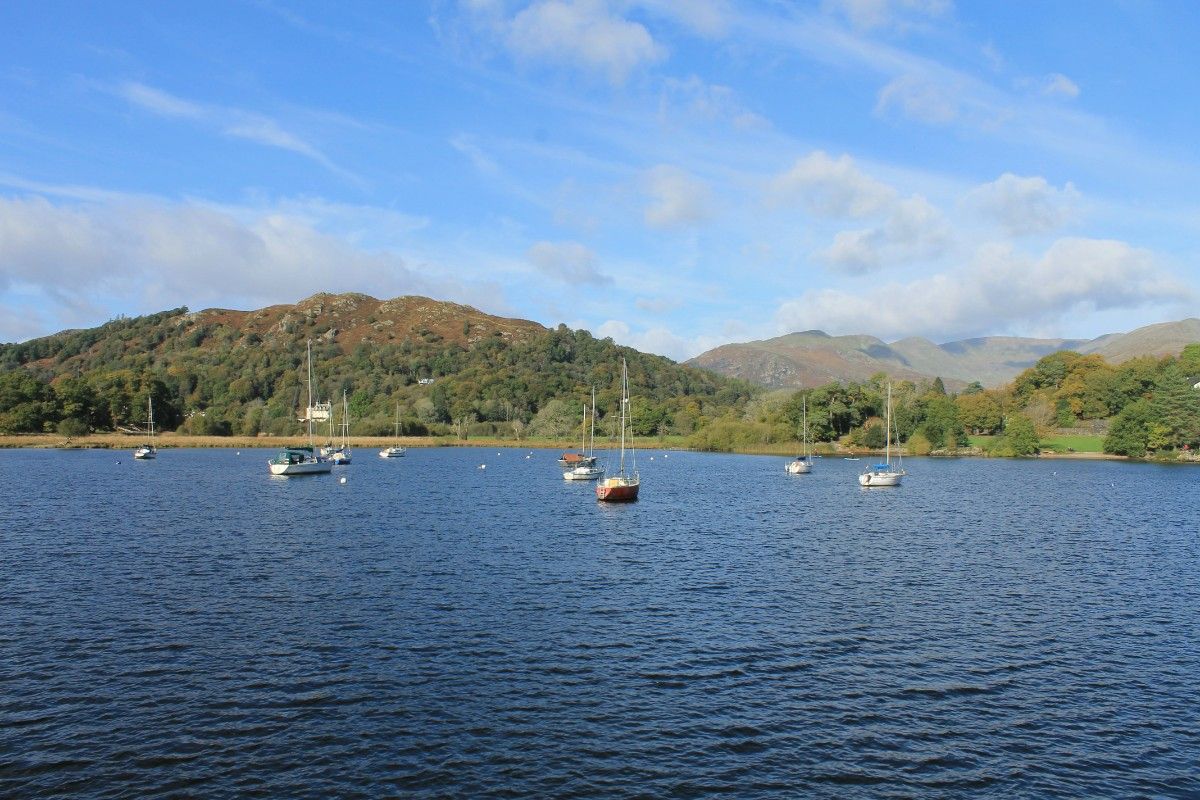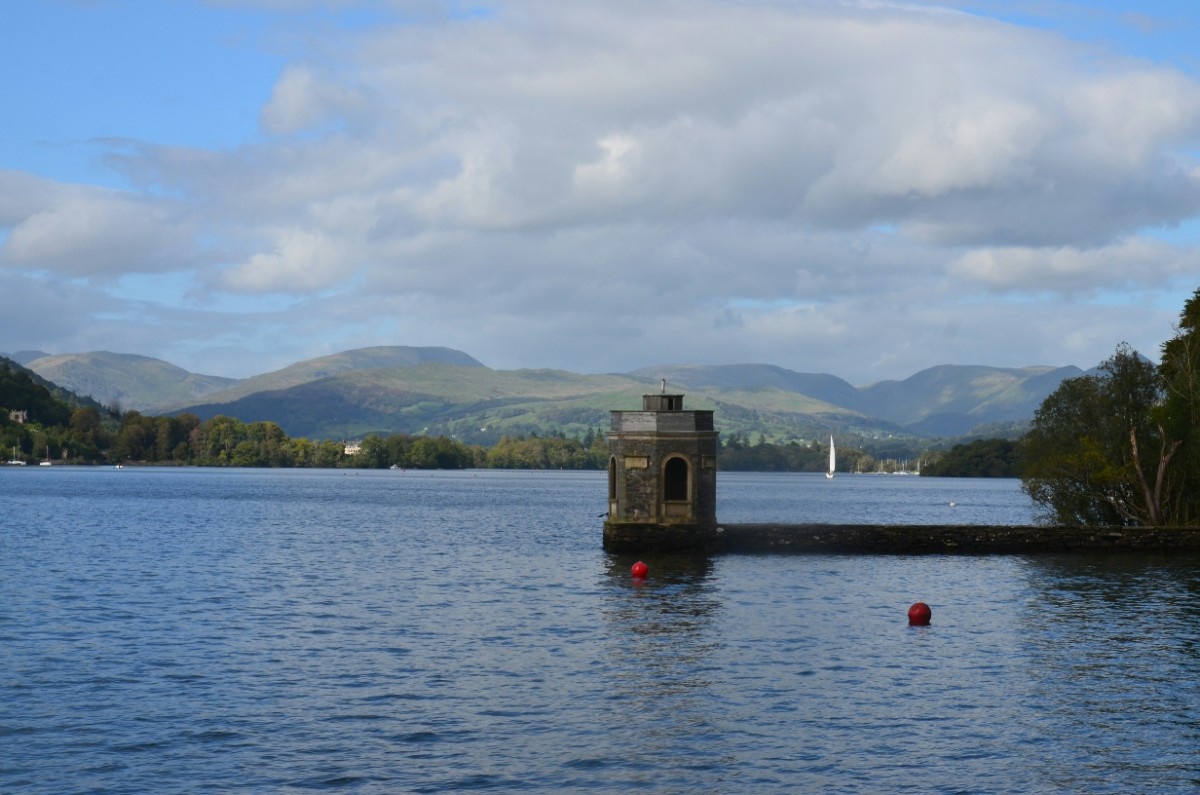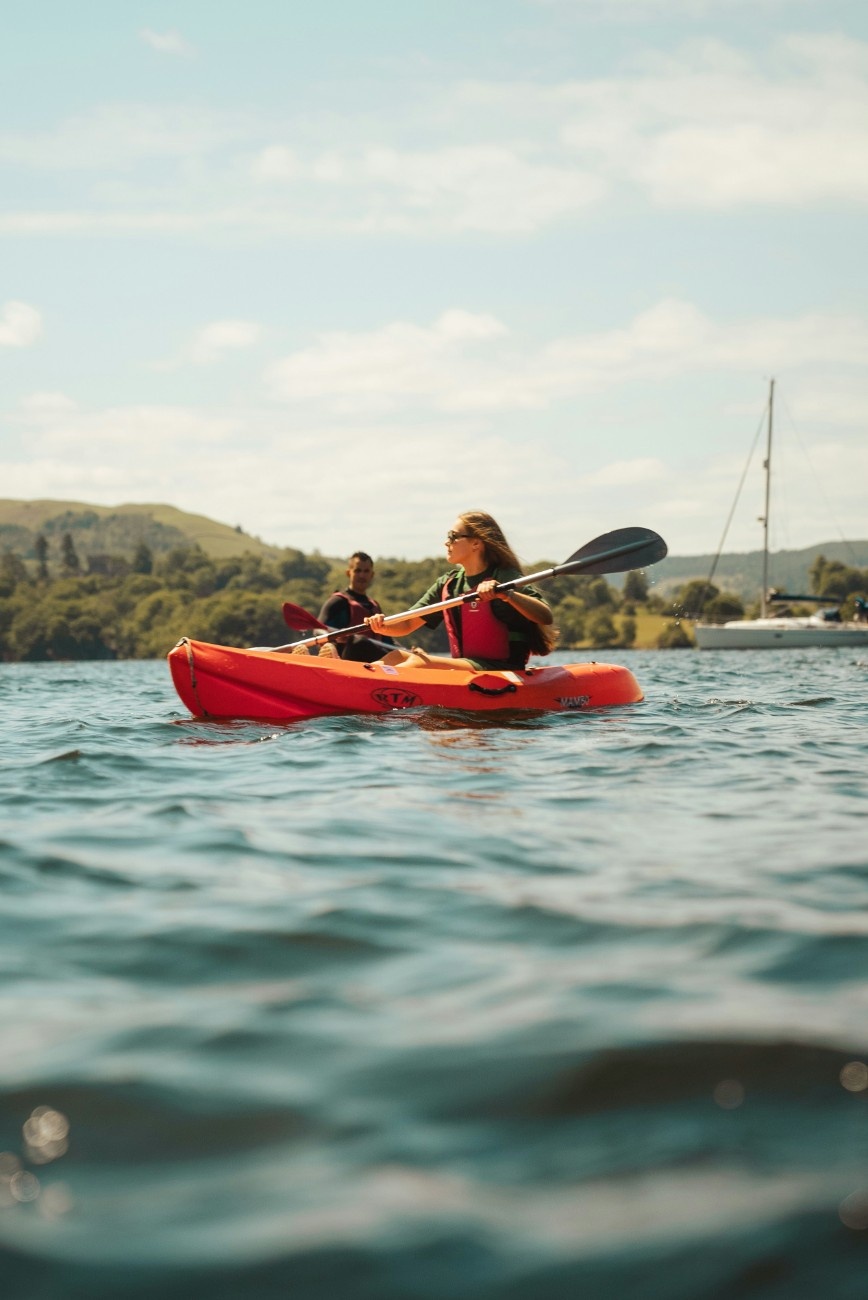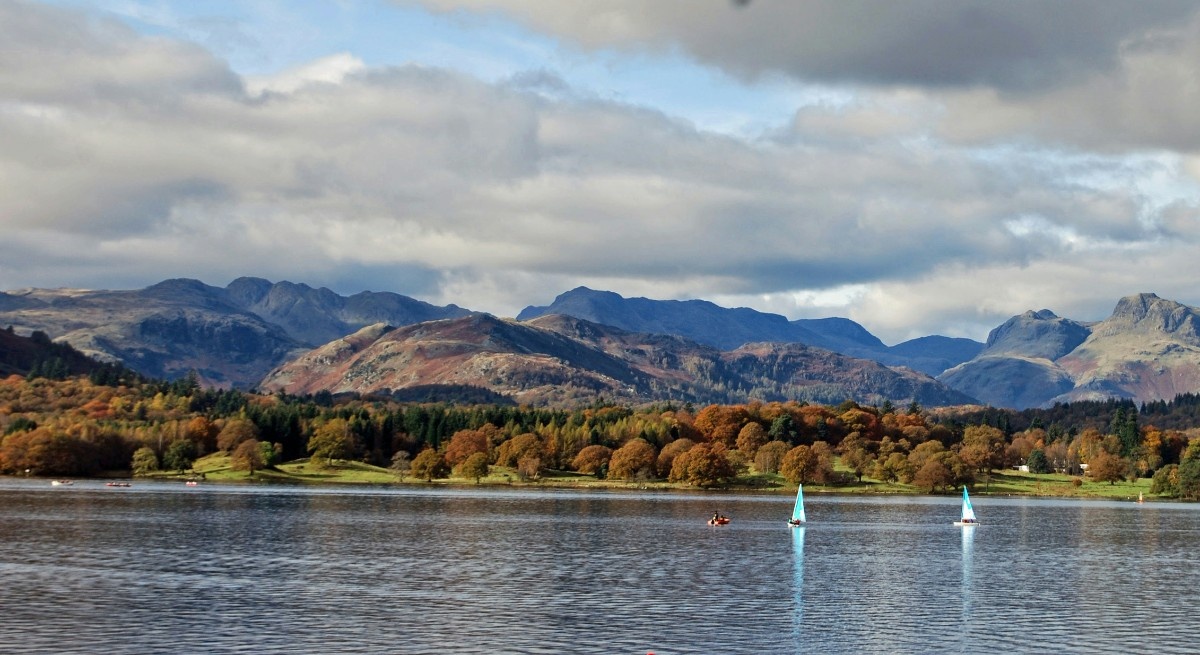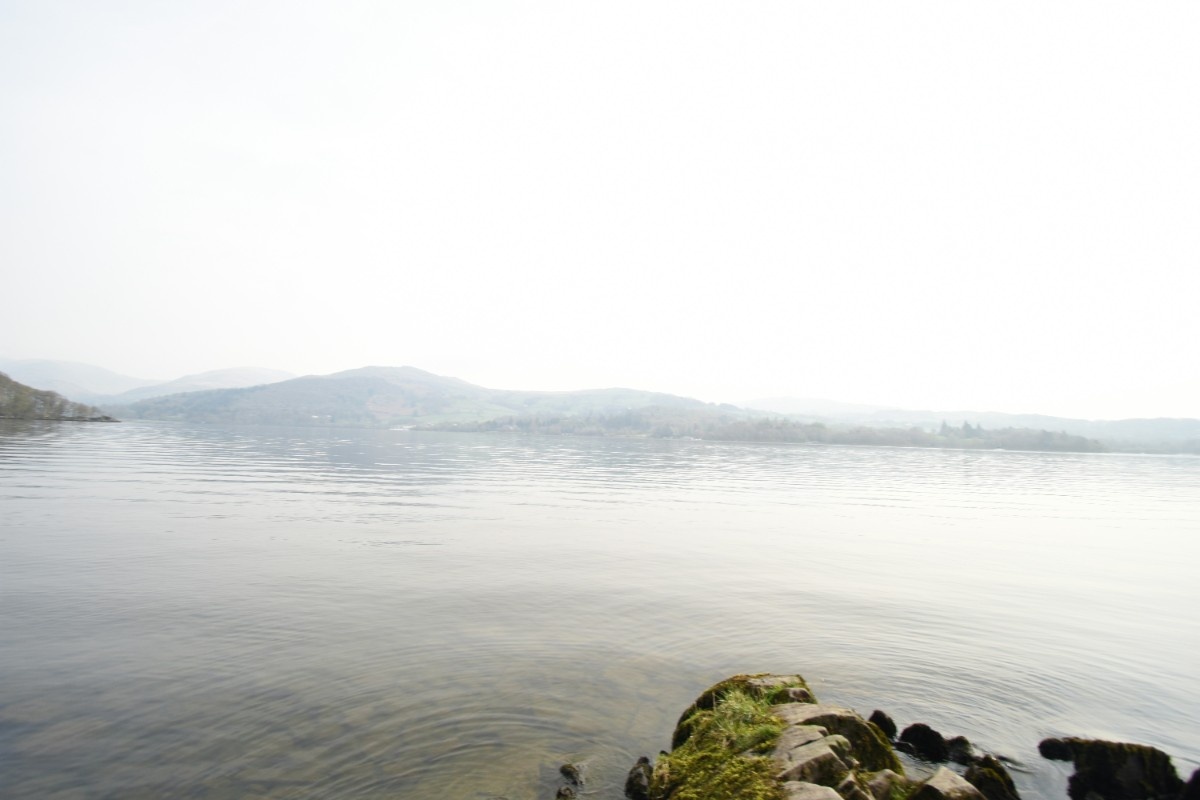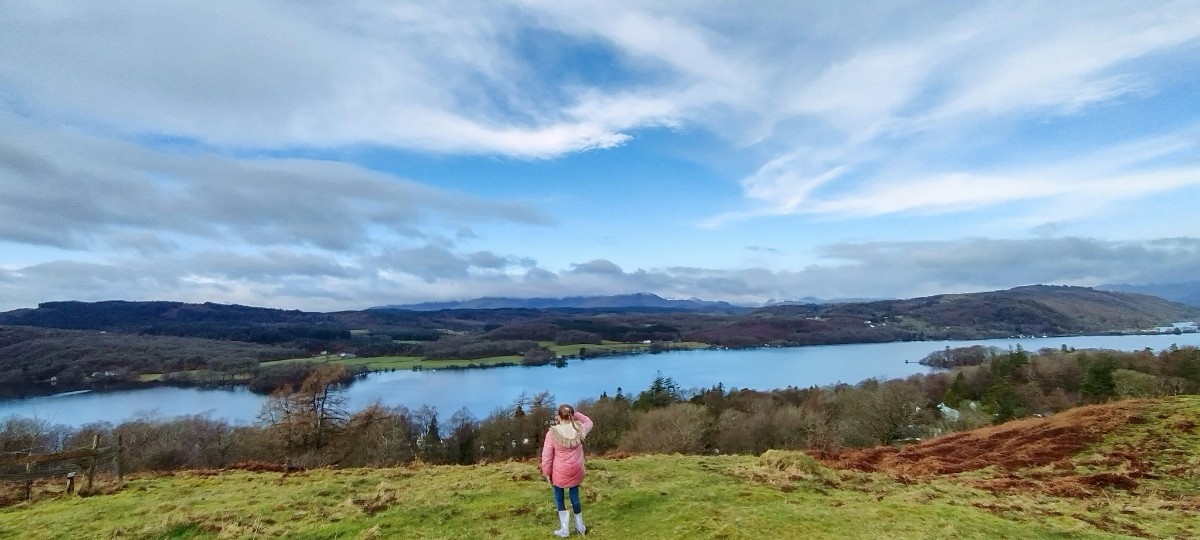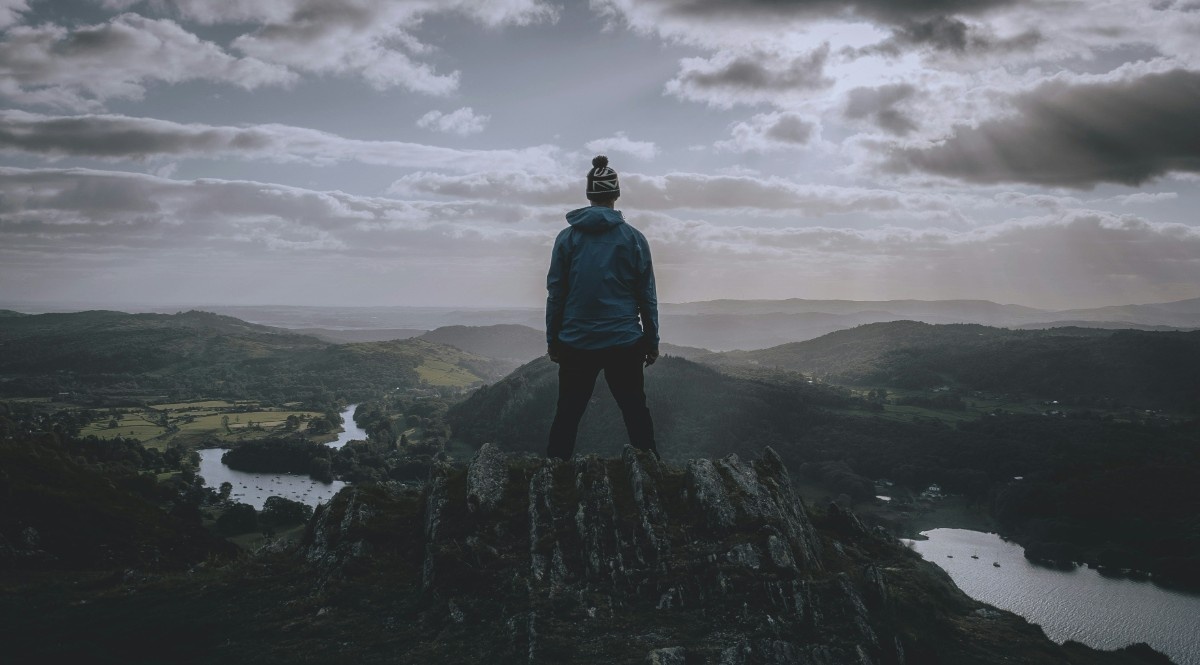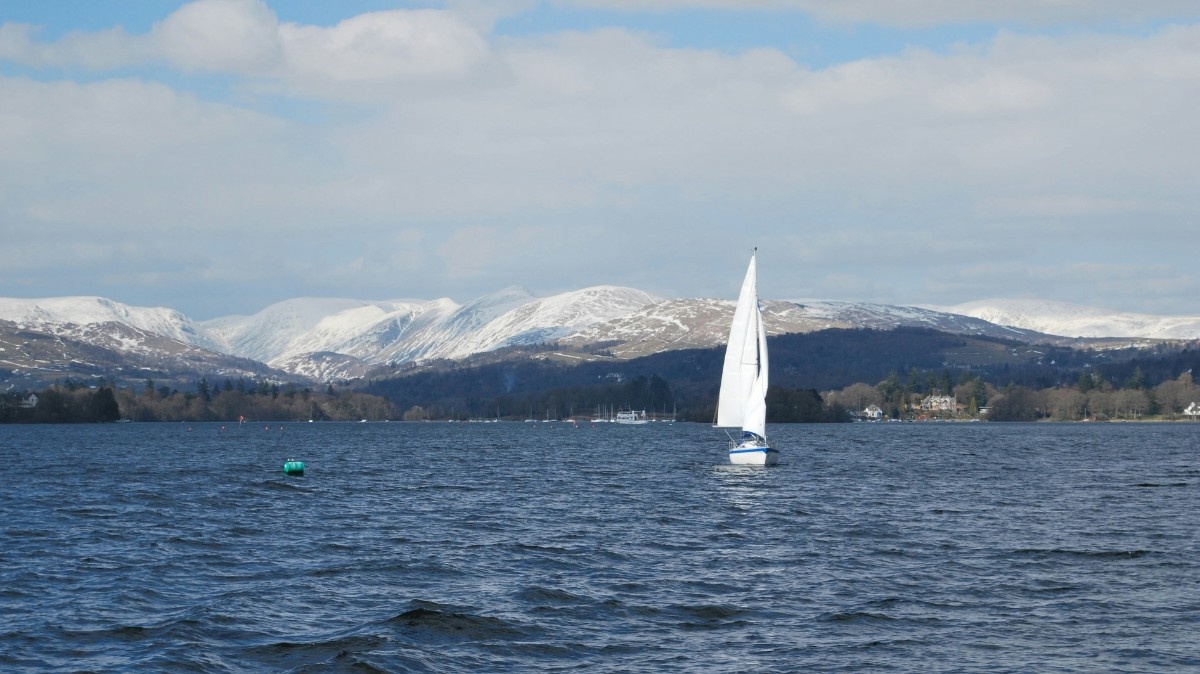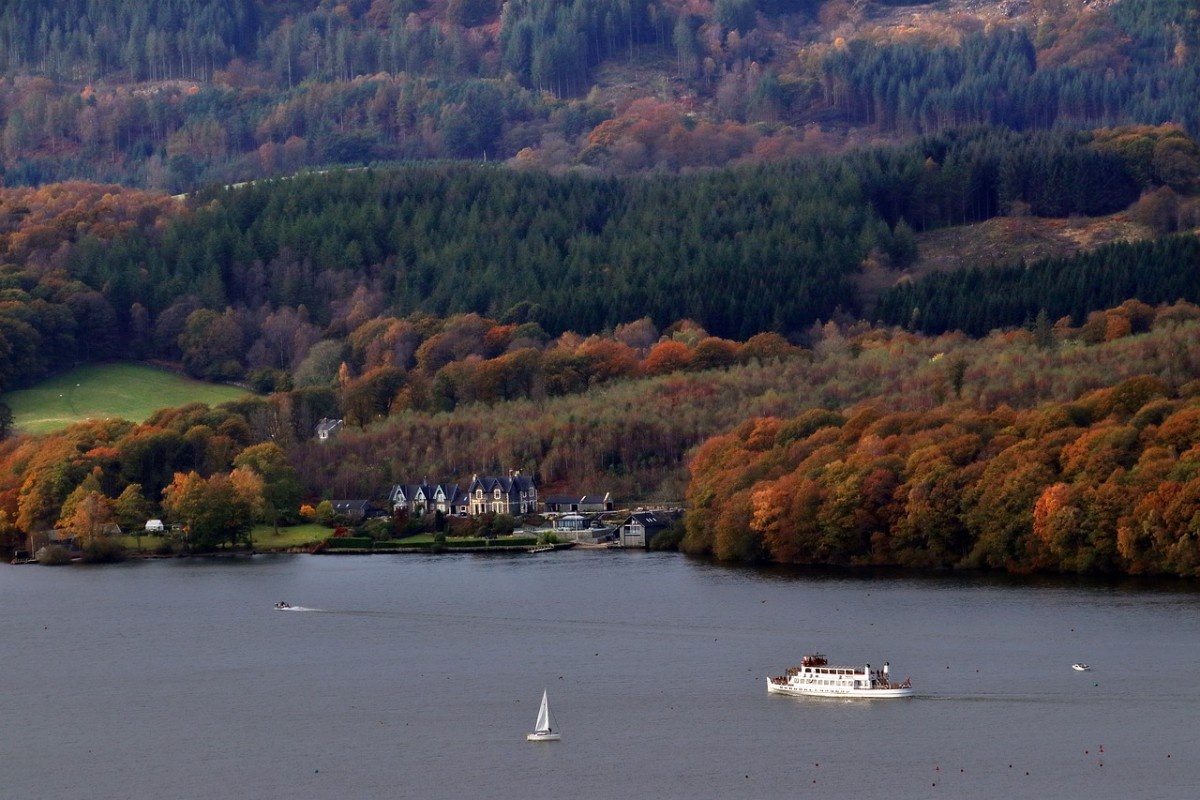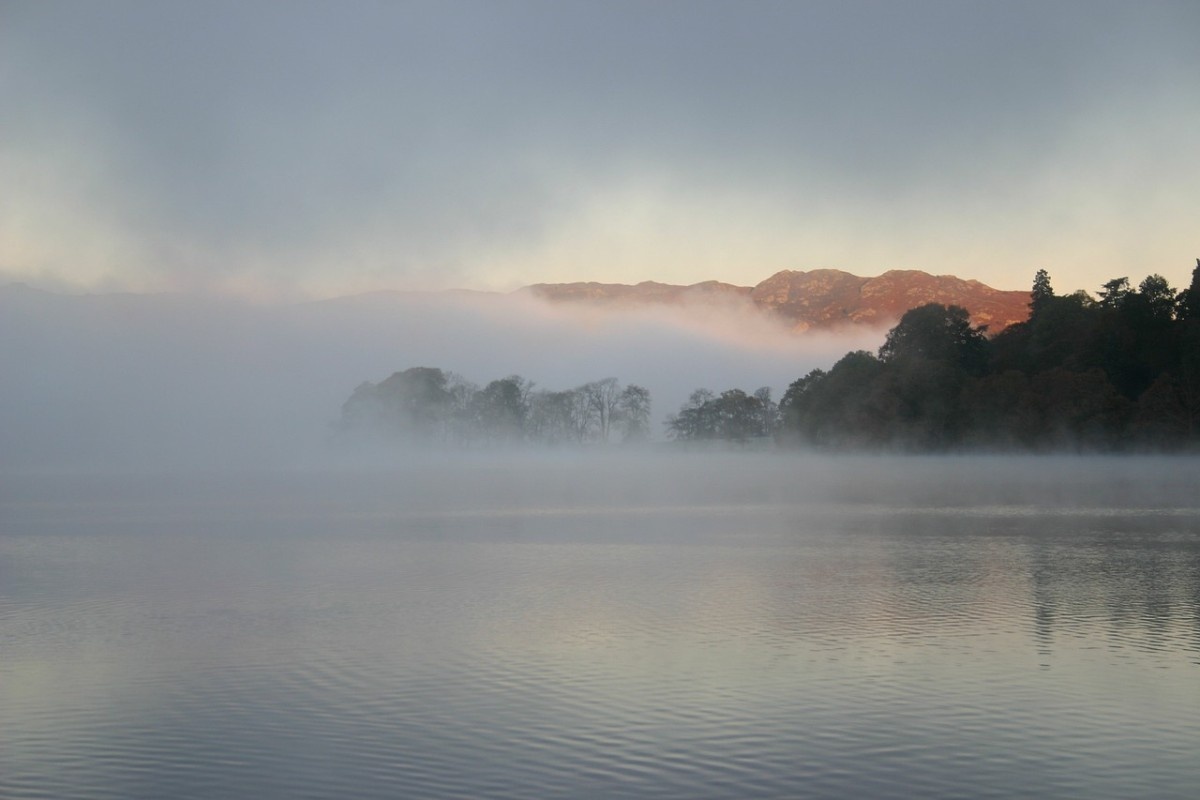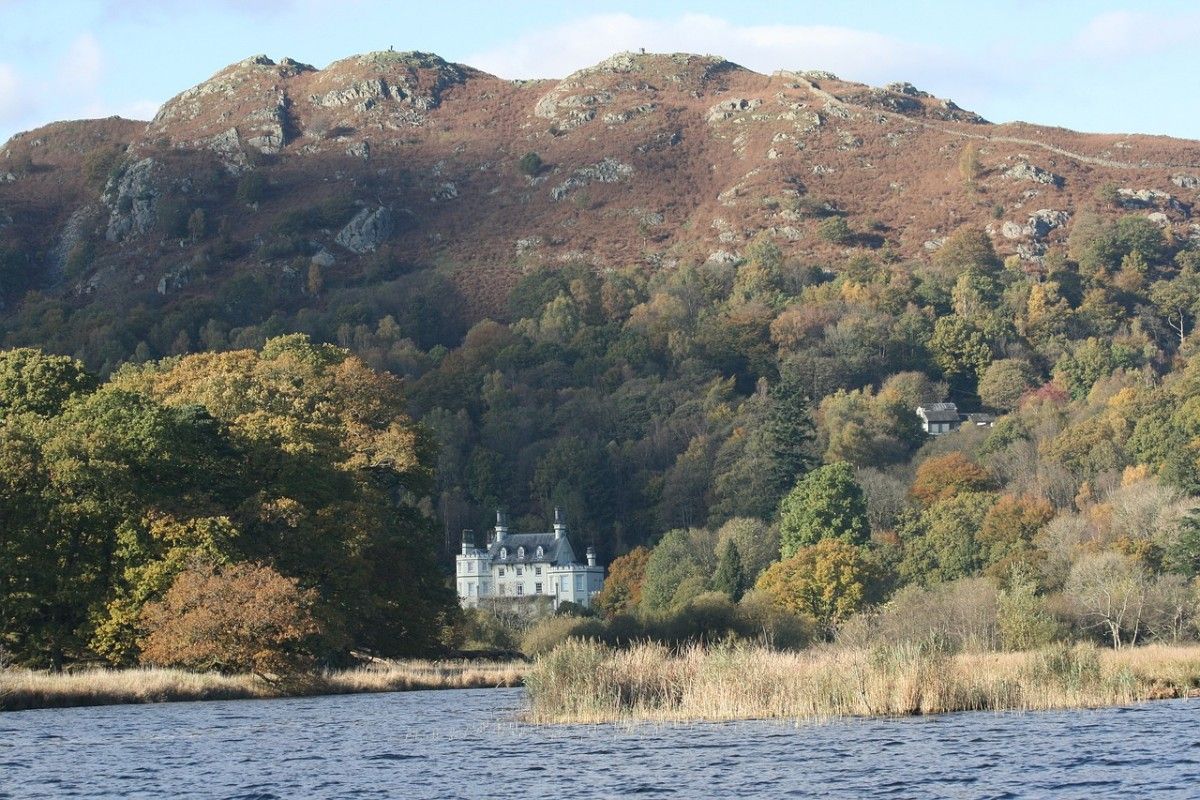Introduction to Lake Windermere
Location and Geography
Lake Windermere, situated in the heart of the Lake District National Park, is the largest natural lake in England. Spanning 10.5 miles in length and 1 mile in width, this awe-inspiring body of water is nestled amidst the picturesque towns of Ambleside and Bowness-on-Windermere. The lake's unique ribbon-like shape is a result of its formation during the last Ice Age, when glaciers carved out the U-shaped valley that now cradles its waters. With a maximum depth of 219 feet, Lake Windermere boasts an impressive volume of water, making it a popular destination for water sports enthusiasts and nature lovers alike.
The lake is surrounded by stunning mountain ranges, including the iconic Langdale Pikes to the north and the Fairfield Horseshoe to the east. These peaks contribute to the lake's unique microclimate, which is milder than the surrounding areas, allowing for a diverse array of flora and fauna to thrive along its shores. The lake is divided into two distinct basins, known as the North Basin and the South Basin, separated by the islands of Belle Isle and Bowness Bay. This geography creates a variety of habitats for the lake's aquatic life, including the rare Arctic Charr, a fish species that has inhabited the lake since the last Ice Age.
Importance and History
Lake Windermere has played a significant role in the region's history and development. For centuries, the lake served as a vital transportation route, connecting the small villages and towns along its shores. Boats carried slate, timber, and agricultural products across the lake, enabling trade and commerce to flourish. The advent of the Kendal and Windermere Railway in 1847 further enhanced the lake's accessibility, bringing in tourists from across the country who were eager to experience the beauty of the Lake District.
The lake's stunning natural beauty has also inspired countless artists, poets, and writers throughout history. William Wordsworth, one of England's most celebrated poets, drew great inspiration from the lake and its surroundings. His famous poem, "There Was a Boy," was written about his experiences skating on the frozen lake during his childhood. Beatrix Potter, the beloved children's author and illustrator, also found inspiration in the Lake District, setting many of her famous tales, such as "The Tale of Peter Rabbit," in the charming countryside surrounding Lake Windermere.
Today, Lake Windermere remains a popular tourist destination, attracting millions of visitors each year. The lake offers a wide range of activities and attractions, from boating and water sports to hiking and sightseeing. Its timeless beauty and tranquillity continue to captivate the hearts and minds of all who visit, making it a true gem of the English countryside.
Exploring Lake Windermere by Boat
Boat Cruises and Tours
One of the most popular ways to experience the beauty of Lake Windermere is by taking a boat cruise or tour. Windermere Lake Cruises, the largest boat operator on the lake, offers a variety of cruise options to suit every taste and preference. Their fleet includes traditional wooden launches, modern passenger boats, and even a restored steamboat, allowing visitors to explore the lake in style and comfort.
The most popular cruise option is the 45-minute Islands Cruise, which takes passengers on a scenic tour of the lake's many islands and bays. Along the way, knowledgeable guides provide interesting commentary on the lake's history, geology, and ecology, pointing out notable landmarks and points of interest. For those looking for a longer and more comprehensive experience, the 90-minute Full Lake Cruise is an excellent choice. This cruise covers the entire length of the lake, offering stunning views of the surrounding mountains and countryside.
Windermere Lake Cruises also offers a range of themed cruises throughout the year, including sunset cruises, jazz cruises, and even Santa cruises during the Christmas season. These special events provide a unique and memorable way to experience the lake, combining the beauty of the natural surroundings with entertainment and festivities.
Self-Drive Boat Hire
For those who prefer a more independent and flexible way to explore Lake Windermere, self-drive boat hire is an excellent option. Several companies, such as Windermere Boat Hire and Low Wood Bay Marina, offer a range of boats for hire, from small electric boats to larger motorboats and sailing yachts.
Hiring a self-drive boat allows visitors to explore the lake at their own pace, discovering hidden coves, secluded beaches, and tranquil bays that are inaccessible by larger cruise boats. Many boat hire companies provide maps and suggested itineraries, ensuring that visitors can make the most of their time on the water. Some popular destinations to visit by self-drive boat include the picturesque village of Ambleside, the historic Wray Castle, and the serene beauty of Pull Wyke Bay.
When hiring a self-drive boat, it is essential to consider the size and type of boat that best suits your needs and experience level. Most boat hire companies provide basic instruction and safety equipment, but it is always a good idea to familiarise yourself with the boat's controls and navigation before setting out on the water. It is also important to be aware of the lake's speed limits and to respect other users of the water, including swimmers, kayakers, and wildlife.
Kayaking and Paddleboarding
For those looking for a more active and immersive way to explore Lake Windermere, kayaking and paddleboarding are excellent options. These low-impact water sports allow visitors to get up close and personal with the lake's stunning scenery, wildlife, and tranquil atmosphere.
Several companies, such as Brockhole on Windermere and Windermere Canoe Kayak, offer kayak and paddleboard rentals, as well as guided tours and lessons for beginners. Kayaking and paddleboarding provide a unique perspective on the lake, allowing visitors to explore its many nooks and crannies, from quiet river inlets to secluded island shores.
One of the most popular kayaking and paddleboarding routes is the journey from Ambleside to Wray Castle, a stunning 19th-century neo-gothic castle set on the shores of the lake. Along the way, paddlers can enjoy breathtaking views of the surrounding mountains, spot rare bird species such as ospreys and kingfishers, and even stop for a picnic on one of the lake's many beaches.
Whether you choose to take a guided tour or strike out on your own, kayaking and paddleboarding on Lake Windermere are sure to be an unforgettable experience. These activities provide a sense of peace, tranquillity, and connection with nature that is hard to find elsewhere, making them a must-do for any visitor to the Lake District.
Lakeside Accommodations and Hotels
Luxury Hotels and Resorts
For those seeking a truly indulgent and memorable stay near Lake Windermere, there are several luxury hotels and resorts to choose from. One of the most iconic is the Langdale Chase Hotel, a stunning Victorian mansion set on the shores of the lake. This elegant hotel features beautifully appointed rooms and suites, many with breathtaking views of the water and surrounding mountains. Guests can enjoy fine dining in the hotel's award-winning restaurant, relax in the spa and wellness centre, or take a dip in the indoor swimming pool.
Another exceptional luxury option is the Macdonald Old England Hotel & Spa, located in the heart of Bowness-on-Windermere. This classic Lakeland hotel offers a range of stylish rooms and suites, each individually designed and furnished to the highest standards. The hotel's spa and wellness centre is a true oasis of calm, featuring a heated indoor pool, sauna, and steam room, as well as a range of indulgent treatments and therapies. Guests can also enjoy afternoon tea in the hotel's conservatory, which offers stunning views of the lake and gardens.
For those seeking a more contemporary luxury experience, the Brimstone Hotel at Langdale is an excellent choice. This boutique hotel features sleek, modern rooms and suites, each with its own private balcony or terrace overlooking the stunning Langdale Valley. Guests can enjoy complimentary access to the hotel's exclusive spa and wellness facilities, including a heated indoor/outdoor pool, sauna, and steam room. The hotel's restaurant, The Stove, serves delicious, locally-sourced cuisine in a stylish and relaxed setting.
Boutique Hotels and B&Bs
For a more intimate and personalised experience, there are many charming boutique hotels and bed and breakfasts to choose from around Lake Windermere. One of the most highly regarded is the Windermere Suites, a luxurious B&B located in a peaceful residential area just a short walk from the lake. This elegant property features eight individually designed suites, each with its own unique character and style. Guests can enjoy a delicious breakfast made with locally-sourced ingredients, as well as complimentary access to a nearby spa and fitness centre.
Another excellent boutique option is the Lindeth Fell Country House, a beautiful Edwardian mansion set in stunning gardens overlooking the lake. This intimate property offers just 14 individually designed rooms, each with its own unique charm and character. Guests can enjoy a delicious breakfast made with locally-sourced ingredients, as well as afternoon tea in the elegant drawing room or on the terrace overlooking the gardens.
For a truly unique and memorable experience, the Gilpin Hotel & Lake House is a must-visit. This luxurious property features two distinct accommodation options: the main hotel, with its stylish rooms and suites, and the Lake House, a stunning private residence set on the shores of a private lake. Guests at the Lake House can enjoy exclusive access to the property's spa and wellness facilities, including a heated indoor pool, sauna, and steam room, as well as a private hot tub and lake view.
Self-Catering Cottages and Apartments
For those who prefer a more independent and flexible stay, there are many self-catering cottages and apartments available around Lake Windermere. These properties offer the perfect base for exploring the area at your own pace, with all the comforts and conveniences of home.
One of the most charming options is The Nook, a cosy and beautifully appointed cottage located in the heart of Ambleside. This two-bedroom property features a comfortable living room with a log burner, a well-equipped kitchen, and a private patio garden with stunning views of the surrounding fells. The cottage is just a short walk from the shops, cafes, and pubs of Ambleside, as well as the shores of Lake Windermere.
For a more luxurious self-catering experience, the Pullwood Bay Estate offers a range of stunning apartments and cottages set in a private 50-acre estate on the shores of Lake Windermere. These elegant properties feature contemporary interiors, state-of-the-art amenities, and breathtaking views of the lake and surrounding countryside. Guests can enjoy access to the estate's private jetty and beach, as well as a range of on-site activities such as fishing, kayaking, and paddleboarding.
Another excellent self-catering option is Cuckoo Brow Cottage, a charming and beautifully appointed property located in the peaceful hamlet of Far Sawrey. This two-bedroom cottage features a cosy living room with a log burner, a well-equipped kitchen, and a private garden with stunning views of the surrounding countryside. The cottage is just a short walk from the shores of Lake Windermere, as well as the famous Hill Top house, once home to Beatrix Potter.
Hiking and Walking Trails in the Lake Windermere Area
Easy Walks and Strolls
For those looking for a gentle and relaxing way to explore the stunning scenery around Lake Windermere, there are many easy walks and strolls to choose from. One of the most popular is the Bowness-on-Windermere to Cockshott Point walk, a gentle 2-mile stroll along the eastern shore of the lake. This easy trail offers stunning views across the water to the distant fells, as well as the chance to spot a variety of wildlife, from ducks and swans to ospreys and otters.
Another delightful easy walk is the Orrest Head trail, a 2.5-mile circular route that starts and ends in the town of Windermere. This trail is famous for being the first Lake District walk completed by Alfred Wainwright, the renowned fell walker and guidebook author. The route involves a short but fairly steep ascent through woodland to the summit of Orrest Head, where walkers are rewarded with breathtaking panoramic views of Lake Windermere and the surrounding fells.
For a longer but still relatively easy walk, the Windermere Western Shore trail is an excellent choice. This 7-mile linear route follows the western shore of the lake from Wray Castle to Ferry House, passing through ancient woodland, quiet bays, and stunning viewpoints along the way. Highlights of the trail include the Victorian Gothic splendour of Wray Castle, the serene beauty of Claife Heights, and the charming village of Far Sawrey.
Moderate Hikes and Fell Walks
For those looking for a more challenging and rewarding hiking experience, there are many moderate trails and fell walks to choose from around Lake Windermere. One of the most popular is the Loughrigg Fell circular walk, a 6-mile route that starts and ends in the charming village of Ambleside. This trail involves a steep but steady ascent to the summit of Loughrigg Fell, where hikers are rewarded with stunning panoramic views of Lake Windermere, Grasmere, and the surrounding fells.
Another excellent moderate hike is the Wansfell Pike trail, a 5-mile circular route that starts and ends in Ambleside. This trail involves a challenging ascent through woodland and over rocky terrain to the summit of Wansfell Pike, where hikers can enjoy breathtaking views of Lake Windermere, the Langdale Pikes, and the Fairfield Horseshoe. Along the way, the trail passes through the charming hamlet of Troutbeck, with its picturesque cottages and traditional pubs.
For a longer and more strenuous fell walk, the Fairfield Horseshoe is a classic choice. This 11-mile circular route starts and ends in Ambleside, taking in eight separate fell summits along the way, including Fairfield, Great Rigg, and High Pike. The trail involves some steep and rocky sections, but the stunning views of Lake Windermere and the surrounding fells make it well worth the effort.
Guided Walks and Hiking Tours
For those who prefer a more structured and informative hiking experience, there are many guided walks and hiking tours available around Lake Windermere. These tours are led by experienced and knowledgeable guides who can provide fascinating insights into the area's history, geology, and ecology, as well as ensure a safe and enjoyable hiking experience.
One of the most popular guided walks is the Beatrix Potter tour, a half-day journey through the stunning landscapes that inspired the beloved children's author. The tour includes visits to several key locations from Potter's life and works, including Hill Top Farm, the setting for many of her famous tales, and the charming village of Hawkshead, where Potter attended school.
Another excellent guided walk is the Wordsworth's Grasmere tour, a half-day exploration of the picturesque village and surrounding countryside that inspired some of William Wordsworth's most famous poetry. The tour includes visits to key locations from Wordsworth's life, including Dove Cottage, the Wordsworth Museum, and the stunning gardens of Rydal Mount.
For a more challenging and immersive guided hiking experience, the Scafell Pike Adventure is a must-do. This full-day tour involves a strenuous ascent of England's highest mountain, Scafell Pike, led by an experienced mountain guide. Along the way, hikers can enjoy stunning views of the surrounding fells and valleys, as well as learn about the area's geology, history, and ecology from their knowledgeable guide.
Weather and Climate at Lake Windermere
Seasonal Weather Patterns
Lake Windermere and the surrounding Lake District experience a temperate maritime climate, characterised by mild temperatures, high humidity, and frequent rainfall throughout the year. The region's weather is heavily influenced by its proximity to the Irish Sea and the North Atlantic Ocean, which bring moist air and cloudy skies to the area.
In spring (March to May), temperatures start to rise, with average daytime highs reaching 12-15°C. This is a beautiful time to visit Lake Windermere, as the landscape bursts into life with colourful wildflowers and lush greenery. However, spring can also be one of the wettest seasons, with frequent showers and occasional heavy downpours.
Summer (June to August) is the warmest and driest season in the Lake District, with average daytime temperatures of 18-21°C. This is the busiest time of year for tourism, as visitors flock to Lake Windermere to enjoy outdoor activities such as boating, swimming, and hiking. However, even in summer, the weather can be unpredictable, with occasional rain showers and cool breezes.
Autumn (September to November) sees temperatures starting to drop, with average daytime highs of 10-15°C. This is a stunning time to visit Lake Windermere, as the surrounding woodlands burst into a spectacular display of autumn colours, from deep reds and oranges to rich golds and browns. However, autumn can also be a wet and windy season, with frequent storms and heavy rainfall.
Winter (December to February) is the coldest season in the Lake District, with average daytime temperatures of 5-8°C. While snow is relatively rare at lake level, the surrounding fells and mountains can often be blanketed in a picturesque layer of white. Winter is a peaceful and romantic time to visit Lake Windermere, with cosy pubs, festive markets, and stunning frosty landscapes to enjoy. However, visitors should be prepared for short daylight hours and the possibility of icy roads and paths.
Microclimates and Local Variations
Despite its relatively small size, the Lake District is home to a surprising variety of microclimates and local variations in weather. These are largely influenced by the region's complex topography, with its deep valleys, high fells, and expansive lakes creating a range of unique weather conditions.
One of the most notable microclimates in the Lake District is the "rain shadow" effect created by the high fells to the west of Lake Windermere. These mountains act as a barrier to the prevailing westerly winds, causing moist air to rise and cool, resulting in heavy rainfall on the western slopes. By contrast, the eastern side of the fells, including much of Windermere, experiences significantly less rainfall, as the air descends and warms, creating a drier and sunnier microclimate.
Another important factor influencing local weather variations is the presence of large bodies of water, such as Lake Windermere itself. The lake acts as a heat sink, absorbing warmth from the sun during the day and releasing it slowly at night, creating a moderating effect on temperatures in the surrounding area. This can result in slightly milder winters and cooler summers compared to nearby inland locations.
Weather Forecasting and Planning
Given the changeable and unpredictable nature of the weather in the Lake District, it is essential for visitors to stay informed and plan accordingly. The Met Office, the UK's national weather service, provides detailed and reliable forecasts for Lake Windermere and the surrounding area, with hourly and daily predictions available online and through mobile apps.
Visitors should also be aware of the potential risks associated with extreme weather events, such as heavy rainfall, strong winds, and occasional flooding. The Environment Agency provides regular updates on flood risks and river levels in the Lake District, while the Lake District National Park Authority offers advice on safe hiking and outdoor activities in different weather conditions.
When planning a trip to Lake Windermere, it is always a good idea to pack for a range of weather conditions, with layers that can be easily added or removed as needed. Waterproof jackets and trousers, sturdy walking boots, and warm hats and gloves are essential items for any time of year, while sun protection and insect repellent are important in the summer months.
By staying informed, prepared, and flexible, visitors to Lake Windermere can enjoy the region's stunning natural beauty and outdoor activities in any weather, while staying safe and comfortable throughout their stay.
Activities and Attractions around Lake Windermere
Water Sports and Boating
Lake Windermere is a paradise for water sports enthusiasts, with a wide range of activities and facilities available for visitors of all ages and abilities. One of the most popular ways to explore the lake is by hiring a boat, with options ranging from traditional wooden rowboats and kayaks to modern motorboats and sailing yachts. Several companies, such as Windermere Boat Hire and Bowness Bay Marina, offer boat rentals and lessons for beginners, as well as guided tours and fishing trips.
For those seeking a more adrenaline-fuelled experience, Lake Windermere also offers excellent conditions for water skiing, wakeboarding, and paddleboarding. The lake's long, straight sections and relatively calm waters make it ideal for these high-speed sports, while the stunning mountain scenery provides a breathtaking backdrop for every adventure. Visitors can hire equipment and take lessons at various centres around the lake, such as the Windermere Outdoor Adventure Centre.
Swimming is another popular activity on Lake Windermere, with several designated swimming areas and beaches dotted around the shoreline. One of the most popular spots is Fell Foot Park, a beautiful lakeside park with a sandy beach, grassy picnic areas, and stunning views of the surrounding fells. The park also has a team of trained lifeguards on duty during the summer months, making it a safe and enjoyable place for families to swim and play.
Family-Friendly Attractions
Lake Windermere and the surrounding area are home to a wealth of family-friendly attractions, offering something for visitors of all ages and interests. One of the most popular destinations is the World of Beatrix Potter, a charming visitor centre and garden dedicated to the life and works of the beloved children's author. The centre features interactive exhibits, video presentations, and a delightful outdoor garden, complete with characters from Potter's stories, such as Peter Rabbit and Mrs. Tiggy-Winkle.
Another must-visit attraction for families is the Brockhole Lake District Visitor Centre, a stunning Arts and Crafts house and garden set on the shores of Lake Windermere. The centre offers a wide range of activities and facilities, including an adventure playground, a mini-golf course, and a treetop trek, as well as guided walks, boat trips, and seasonal events. The beautiful gardens and lakeshore are also perfect for picnics and relaxation, with stunning views of the surrounding fells.
For a unique and educational experience, families can also visit the Lakes Aquarium, a fascinating underwater world located on the southern shore of Lake Windermere. The aquarium is home to a diverse collection of native and exotic freshwater species, including pike, perch, and char, as well as otters, water voles, and diving ducks. Visitors can learn about the ecology and conservation of the Lake District's underwater habitats, as well as enjoy hands-on activities and feeding demonstrations.
Cultural and Historical Sites
The Lake Windermere area is steeped in history and culture, with a wealth of fascinating sites and landmarks to explore. One of the most iconic is Wray Castle, a stunning Victorian neo-gothic mansion set on the western shore of the lake. The castle was built in 1840 as a private residence, but today it is owned by the National Trust and open to the public for guided tours and special events. Visitors can explore the castle's grand halls and chambers, learn about its history and architecture, and enjoy stunning views of the lake and surrounding fells from the battlements.
Another important cultural site is Blackwell, The Arts & Crafts House, a beautiful example of the Arts and Crafts movement in architecture and design. Located on the eastern shore of Lake Windermere, the house was built in 1900 as a holiday home for the wealthy Holt family, and features stunning interiors by leading designers of the time, such as MH Baillie Scott and CR Ashbee. Today, the house is open to the public as a museum and gallery, showcasing the principles and aesthetics of the Arts and Crafts movement, as well as hosting temporary exhibitions and events.
For a taste of the region's literary heritage, visitors can explore the Wordsworth Museum and Art Gallery, located in the charming village of Grasmere. The museum is dedicated to the life and works of William Wordsworth, the famous Romantic poet who lived and wrote in the Lake District for much of his life. The museum features a fascinating collection of manuscripts, artworks, and personal items, as well as temporary exhibitions and events exploring Wordsworth's legacy and influence. Visitors can also explore the beautiful gardens and woodland surrounding the museum, which inspired some of Wordsworth's most famous poems.
History and Culture of Lake Windermere and the Lake District
Early Settlement and Industry
The Lake District has a rich and fascinating history, with evidence of human settlement dating back to prehistoric times. The earliest known inhabitants were Mesolithic hunter-gatherers, who roamed the region's forests and fells in search of food and shelter. Later, Neolithic and Bronze Age farmers established more permanent settlements, leaving behind mysterious stone circles and burial cairns that can still be seen today.
In the Roman era, the Lake District was an important source of natural resources, particularly lead and copper, which were mined and transported across the empire. The Romans also built a network of roads and forts in the region, including the famous Hardknott Roman Fort, which offers stunning views of the surrounding fells.
During the Middle Ages, the Lake District was a largely agricultural region, with sheep farming and wool production forming the backbone of the local economy. The region's remote location and rugged terrain made it a haven for outlaws and rebels, including the legendary figure of Adam Bell, a skilled archer who roamed the fells in defiance of the law.
In the 18th and 19th centuries, the Lake District underwent a major transformation, as the Industrial Revolution brought new technologies and industries to the region. The textile industry, in particular, boomed during this period, with large mills and factories springing up in towns like Kendal and Ambleside. The region also became an important centre for the production of bobbin lace, with skilled craftswomen creating intricate designs that were sold around the world.
Romantic Poets and Artists
The Lake District is perhaps best known for its association with the Romantic poets and artists of the late 18th and early 19th centuries. Writers such as William Wordsworth, Samuel Taylor Coleridge, and Robert Southey were drawn to the region's stunning natural beauty and tranquil atmosphere, finding inspiration in its mountains, lakes, and valleys.
Wordsworth, in particular, had a deep and enduring connection to the Lake District. Born in Cockermouth in 1770, he spent much of his childhood exploring the region's fells and vales, developing a lifelong love of nature that would inform his poetry and philosophy. In 1799, he moved to Dove Cottage in Grasmere with his sister Dorothy, where he wrote some of his most famous works, including "I Wandered Lonely as a Cloud" and "The Prelude".
Other Romantic poets and artists followed in Wordsworth's footsteps, drawn to the Lake District's unique blend of natural beauty and creative energy. Coleridge, who collaborated with Wordsworth on the groundbreaking "Lyrical Ballads", lived in Keswick for several years, while Southey settled in Greta Hall near Derwentwater. The region also attracted a number of notable painters, including J.M.W. Turner and John Constable, who captured its stunning landscapes in vivid detail.
Today, the legacy of the Romantic poets and artists lives on in the Lake District, with numerous museums, galleries, and literary trails dedicated to their lives and works. Visitors can explore Wordsworth's House in Cockermouth, Dove Cottage in Grasmere, and Rydal Mount, Wordsworth's final home, as well as the Wordsworth Museum and Beatrix Potter Gallery in Hawkshead.
Conservation and Tourism
In the late 19th and early 20th centuries, the Lake District faced a new challenge, as the growth of industry and tourism threatened to spoil its natural beauty and tranquillity. In response, a group of conservationists, led by John Ruskin and Hardwicke Rawnsley, founded the Lake District Defence Society in 1883, which later became the National Trust.
The National Trust played a crucial role in protecting the Lake District's landscapes and heritage, acquiring large tracts of land and historic properties to preserve them for future generations. Today, the Trust owns over a quarter of the Lake District National Park, including Hill Top, the former home of Beatrix Potter, and Wray Castle, a stunning Victorian neo-gothic mansion on the shores of Lake Windermere.
Tourism also began to play an increasingly important role in the Lake District's economy and culture during this period. The advent of the railways in the mid-19th century made the region more accessible to visitors, while the popularity of outdoor pursuits like walking, climbing, and sailing fuelled a growing interest in the region's natural beauty.
Today, tourism is the lifeblood of the Lake District, with millions of visitors from around the world flocking to the region each year. Lake Windermere, in particular, is a major hub for tourism, with a wide range of accommodations, attractions, and activities catering to every taste and budget.
However, the growth of tourism has also brought new challenges, as the region struggles to balance the needs of visitors with the importance of conservation and sustainability. Organisations like the Lake District National Park Authority and Cumbria Tourism are working to promote responsible tourism practices, encouraging visitors to respect the environment, support local businesses, and help preserve the region's unique character and heritage for generations to come.
Conclusion and Final Thoughts on Lake Windermere
A Timeless Destination
Lake Windermere is a truly special place, a destination that has captured the hearts and imaginations of visitors for centuries. From its stunning natural beauty to its rich history and culture, there is something about this corner of the Lake District that speaks to the soul, inviting us to slow down, unwind, and connect with the world around us.
Whether you are a first-time visitor or a seasoned traveller, Lake Windermere has something to offer everyone. With its wide range of accommodations, activities, and attractions, the lake and its surroundings cater to every taste and budget, from luxury hotels and fine dining to cosy cottages and pub lunches.
At the same time, Lake Windermere is more than just a tourist destination. It is a living, breathing landscape that has shaped the lives and livelihoods of generations of local people, from the early settlers and farmers to the Romantic poets and artists who found inspiration in its beauty.
Today, Lake Windermere continues to play a vital role in the region's economy and culture, attracting millions of visitors each year and supporting a thriving tourism industry. However, it is also a place of great environmental and historical significance, with a rich biodiversity and heritage that must be protected and preserved for future generations.
A Call to Action
Like many natural and cultural treasures around the world, Lake Windermere faces a range of challenges and threats, from climate change and overdevelopment to the pressures of tourism and urbanisation.
It is up to all of us – visitors, locals, and stakeholders alike – to work together to address these challenges and ensure that Lake Windermere remains a vibrant, sustainable, and welcoming destination for all. Whether through responsible tourism practices, conservation efforts, or simply a deep appreciation and respect for the natural world, we all have a role to play in safeguarding this incredible place.
So let us take inspiration from the beauty and resilience of Lake Windermere, and let us commit ourselves to being responsible stewards of this precious landscape. Let us explore its wonders with care and respect, support its communities and businesses, and help preserve its unique character and heritage for generations to come.
In doing so, we not only honour the legacy of those who have come before us, but we also ensure that future generations will have the opportunity to experience the magic and majesty of this truly special place. As Wordsworth reminds us, "Nature never did betray the heart that loved her," and in loving and protecting Lake Windermere, we too can find a sense of purpose, connection, and belonging that will last a lifetime.
Related Articles

Let us know you agree to cookies
We use marketing, analytical and functional cookies as well as similar technologies to give you the best experience. Third parties, including social media platforms, often place tracking cookies on our site to show you personalised adverts outside of our website.
We store your cookie preferences for two years and you can edit your preferences via ‘manage cookies’ or through the cookie policy at the bottom of every page. For more information, please see our cookie policy.
